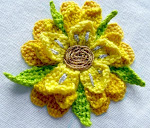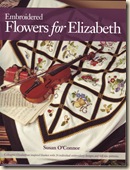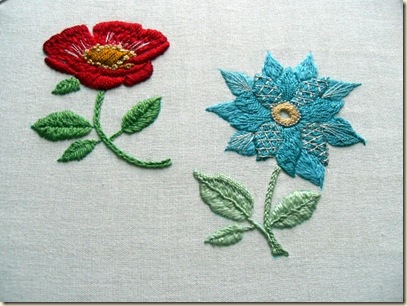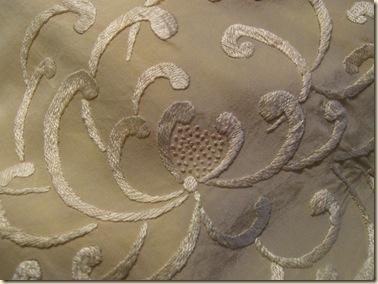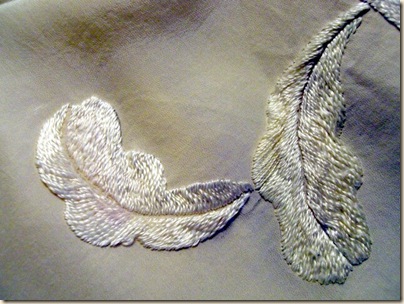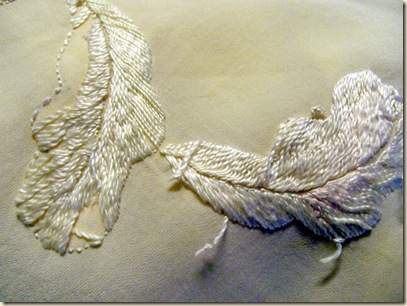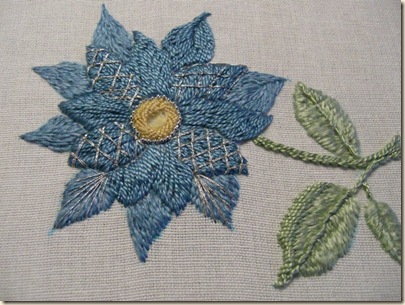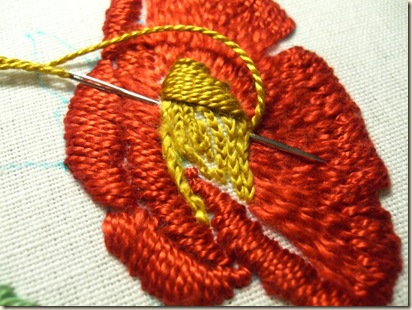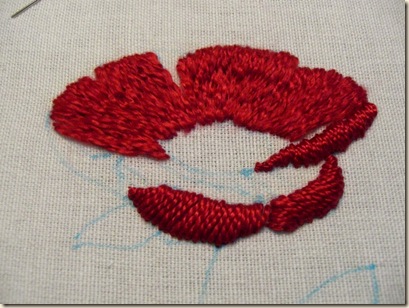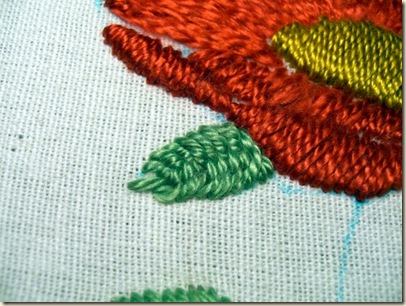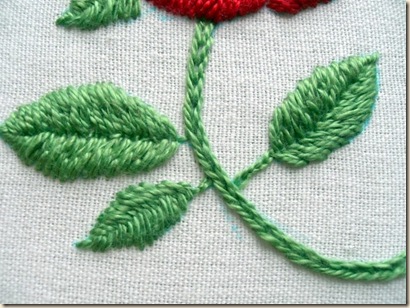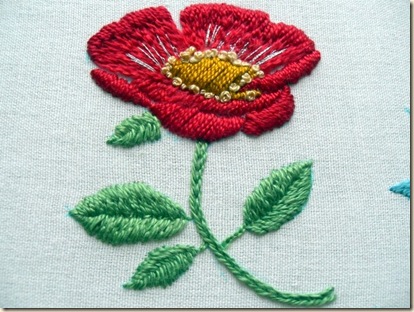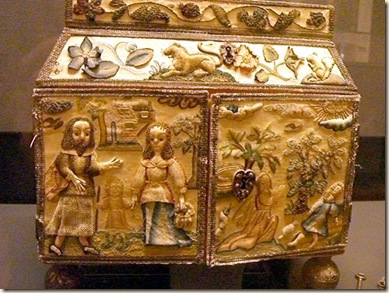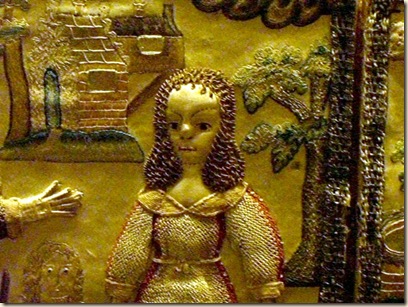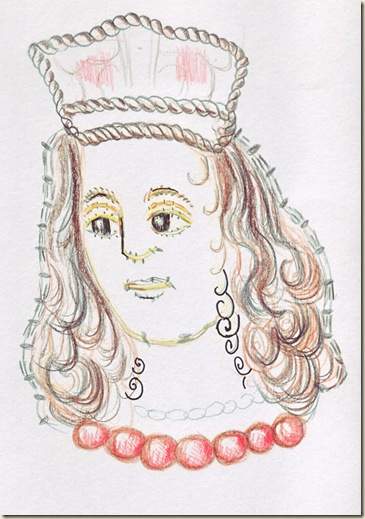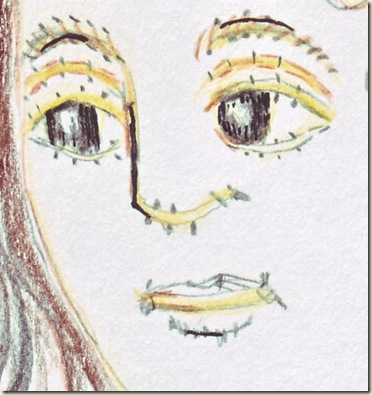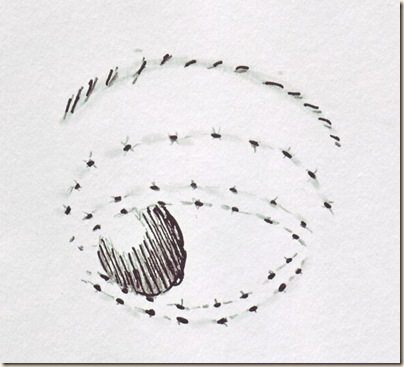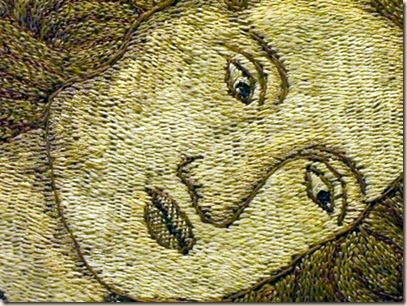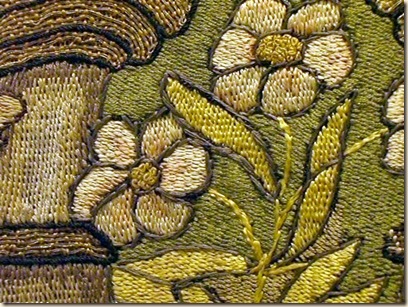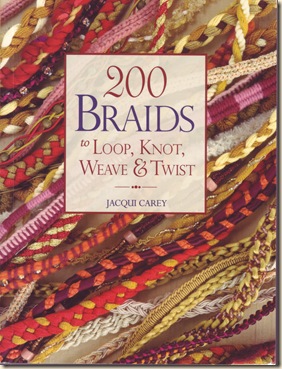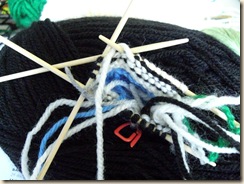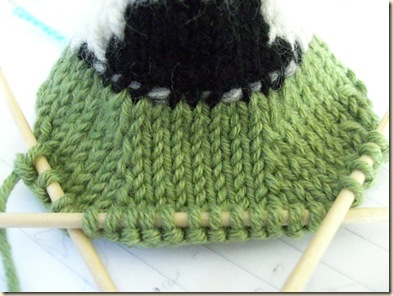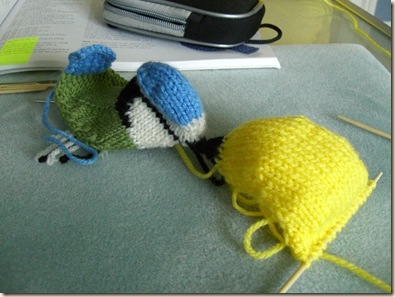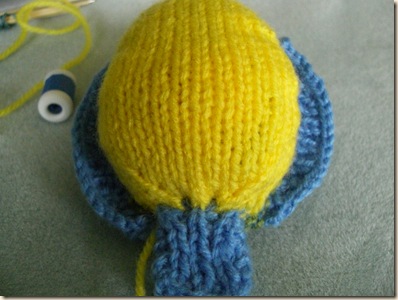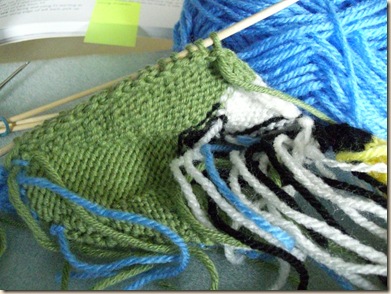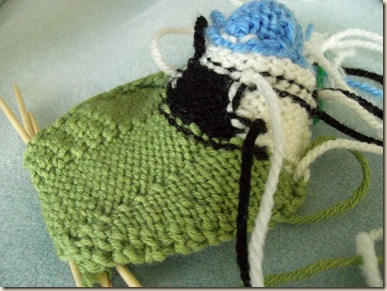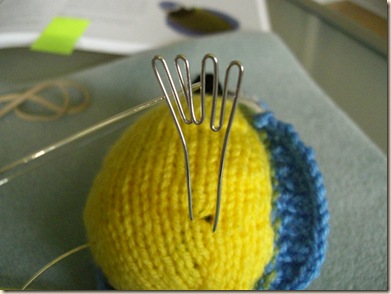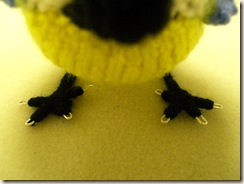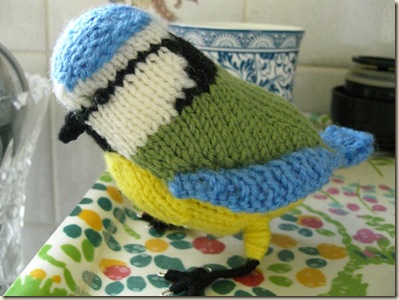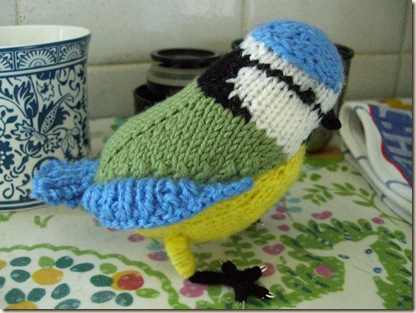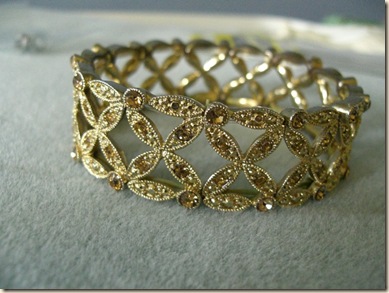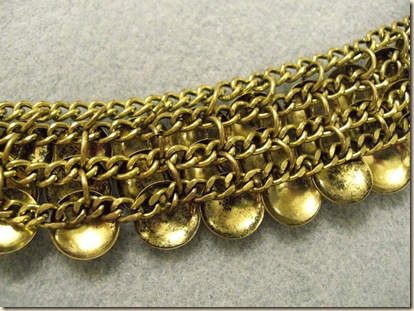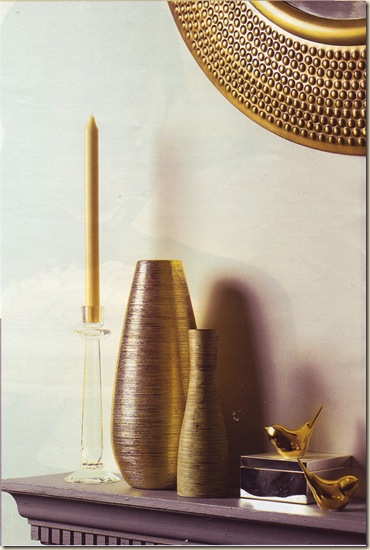As you can tell, I’m still trying to make my posts shorter…
Recently I received Flowers for Elizabeth (FFE) by Susan O’Connor, published by Country Bumpkin.
To say the book is wonderful is an understatement!
I bought it for the patterns and to help me with colours.
And so, that book led to these two flowers. They are not patterns from the book, exactly, but inspired by it.
FFE includes lots of wonderful little tutorials of stitches and techniques, but alas it does not cover Long & Short (L&S) Stitch in any great detail.
As we all know, L&S is pretty difficult to master and there is a lot of, sometimes, contradictory information out there about how to tackle it.
Personally, I always had an inkling that I was doing something wrong, but I didn’t know precisely what it was until recently.
We’re told there are basically 2 distinct ways to work the stitch. Either you come up into the space between 2 previous stitches or you split the stitch on a previous row to re-emerge.
After watching several exemplary videos and reading as much as I could online, I was still no closer to producing what I wanted to see.
That’s when I decided take a closer look at how the Elizabethans tackled L&S. I looked again at all the sources I have and concluded that they worked L&S two ways too:
- When their thread was (thicker and) twisted, they used a ‘brick stitch’’ technique, and came up between two earlier stitches. Although when they worked this ‘brick’ method, their stitches were much more compact than modern references. The resulting texture comprises of lots of little bumps that are pointed at the top and bottom.
- In contrast, when they used a flat filament silk, they would split the stitch of the preceding row and end up with a comparatively smooth texture and gradual colour blending.
As I was working with cotton perlee this time, which has a firm twist, I opted for the former method but still wasn’t happy with my efforts.
To cut a long (& short) story short (lol), I began to realise I was doing something wrong.
In fact, it turns out I was doing 2 things wrong but I had to solve the mystery in a particular order…
Then I came across a quotation that helped me a lot and provided a starting point for much-needed further investigation:
“Long & Short Stitch is very similar to Satin Stitch”.
I found that observation very illuminating.
That’s when I decided to pull out my handmade vintage, Chinese silk dressing gown that had been given to me, because I remembered it displays good examples of (unpadded) Satin Stitch:.
Here is a close up of the leaves,
This is the back of them.
Two things struck me while looking at this textile again.
1. How you can see that L&S really is an ‘extension’ of Satin Stitch.
2. How loose the work is, on both sides.
This got me thinking…
I realised that the first thing I was doing totally wrong, was that I was pulling the thread too tightly after each Satin Stitch. Hence I would ‘shrink’ the effect and inevitably cause more problems for myself by then needing to pack in more (and more) stitches to create a ‘fullness’, that I had inadvertently lost by pulling too hard in the first place.
Then I started to make the Borage pictured here, but this time much more loosely than I was used to doing.
This approach paid off and its not a complete failure but it was still ‘woolly’, figuratively speaking.
When I came to do the leaves something happened…
I find working Satin Stitch very time-consuming, I think everyone says that, but I’ve always felt it was because I wasn’t doing it right.
Anyway, while I was thinking, I instinctively turned the work 90 degrees to achieve a better slant, as I was working the inner section of the leaf at the time.
When I finished that row I checked back over what I had done and could immediately see the stitches were smoother, more regular and more importantly, I had managed to work faster!
To jump forward a little, because I didn’t manage to take shots of the leaf being worked, this is the centre of the Peony being worked, later on.
The thing to note about this picture is that this is the direction in which I used to work the stitch.
Then I changed to this method.
As you can see, I now work in the most comfortable position, which is to go with the natural direction of my thumb and sew horizontally, rather than vertically.
There are various reasons why this way works better for me, quite apart from it simply feeling more natural.
As things had picked-up, I continued with the Peony.
Stage 1
So working similarly, because Satin Stitch and L&S are virtually one and the same, I applied exactly the same principles to my L&S areas and quickly completed several red petals.
Then I moved on to making a tiny, Cretan stitch sepal. This was pulled out eventually because it proved to be too cramped and ‘busy’ in texture.
I decided then to split the plies once more and make the 2 smaller leaves with Fishbone Stitch and the larger ones with L&S.
The stalk incidentally, is made with Wheat Stitch. This is described in FFE and is a very neat way to produce what looks like a very orderly chain stitch band but is compiled of 2 separate lines of stitching.
Gotta go ppl !
P.S. I have great news about The Bag – I have finally found a silk supplier that has filament silk that really ‘glows’, is a reasonable price, and is processed less than 10 miles away!

